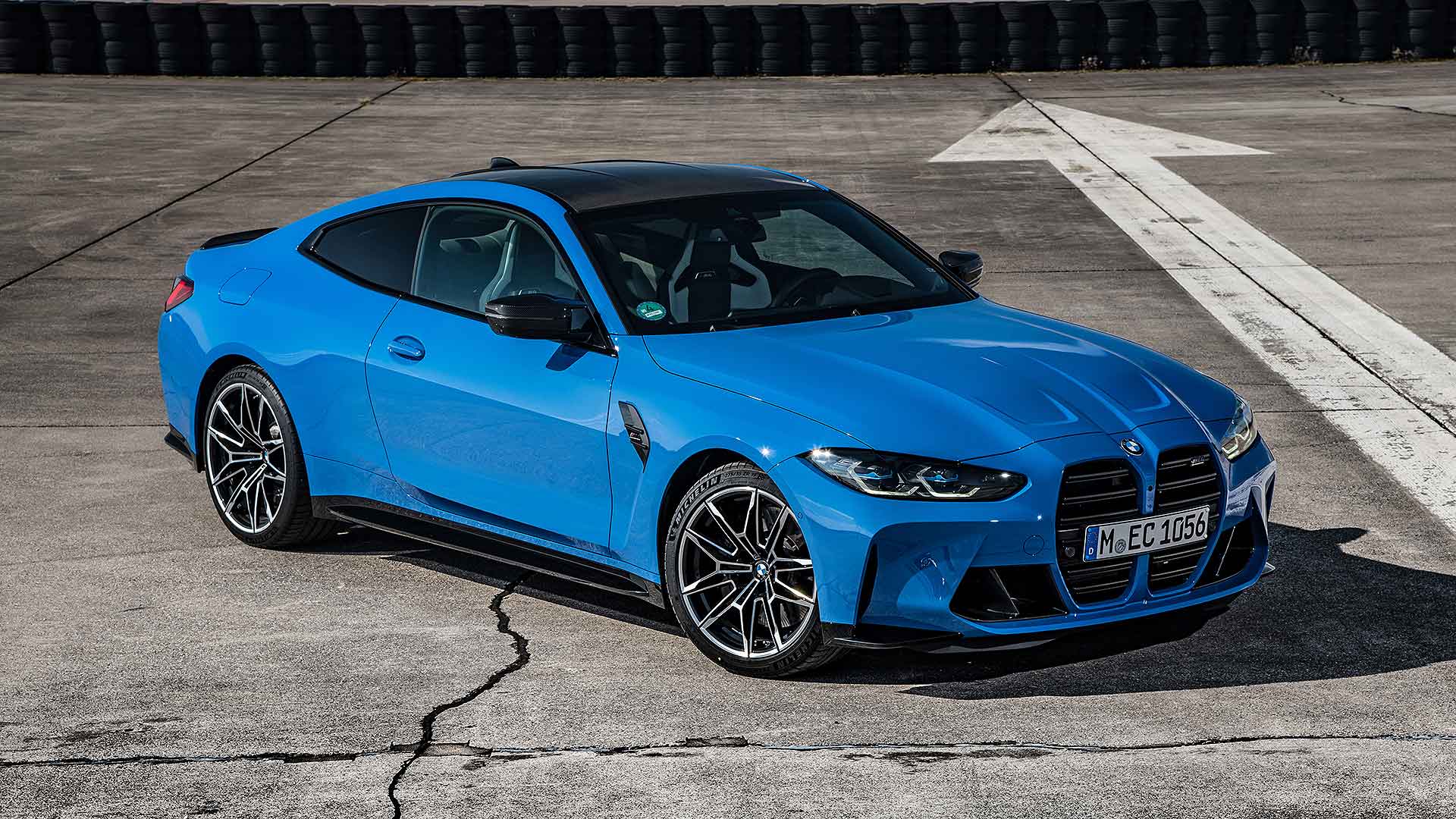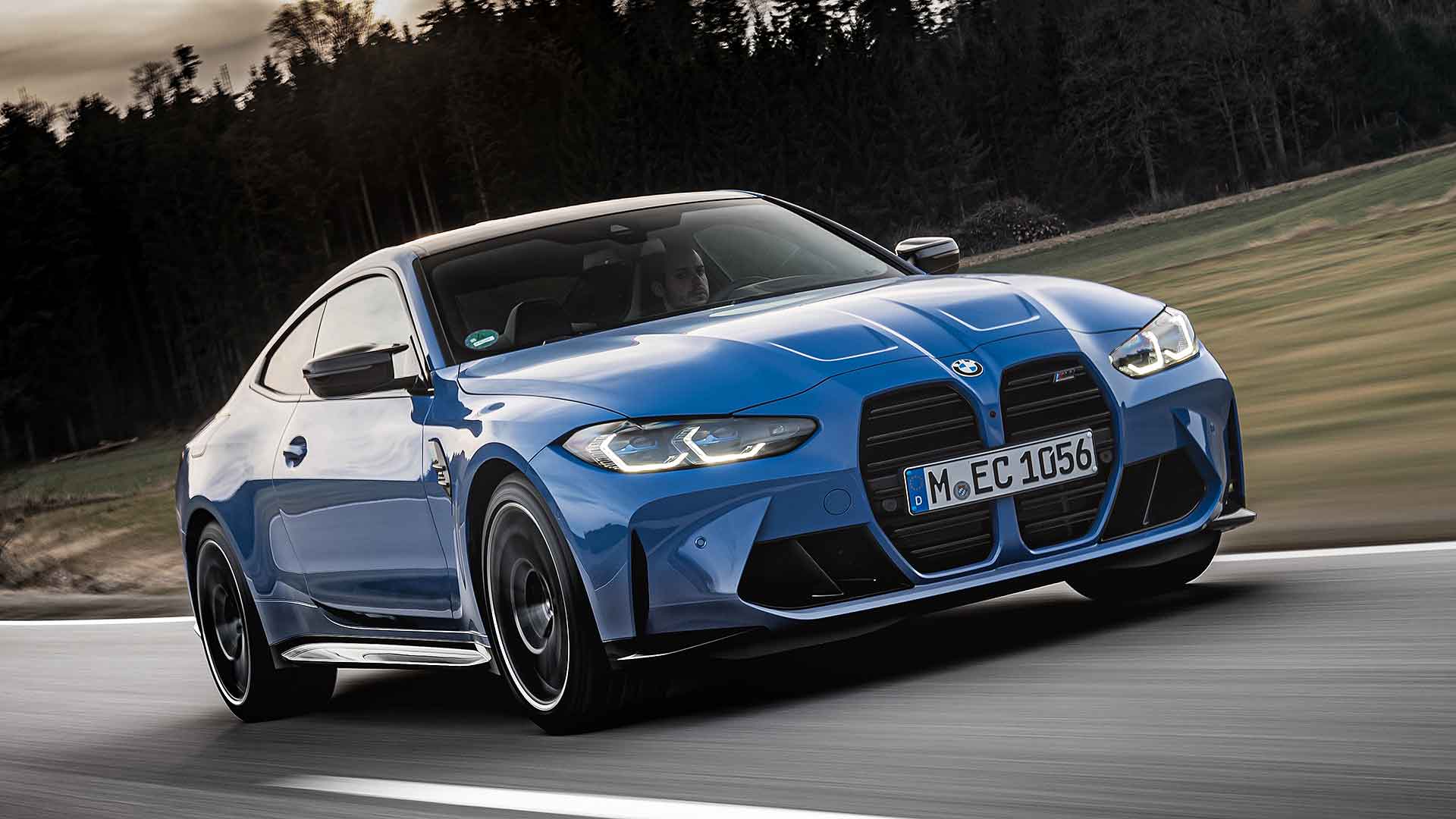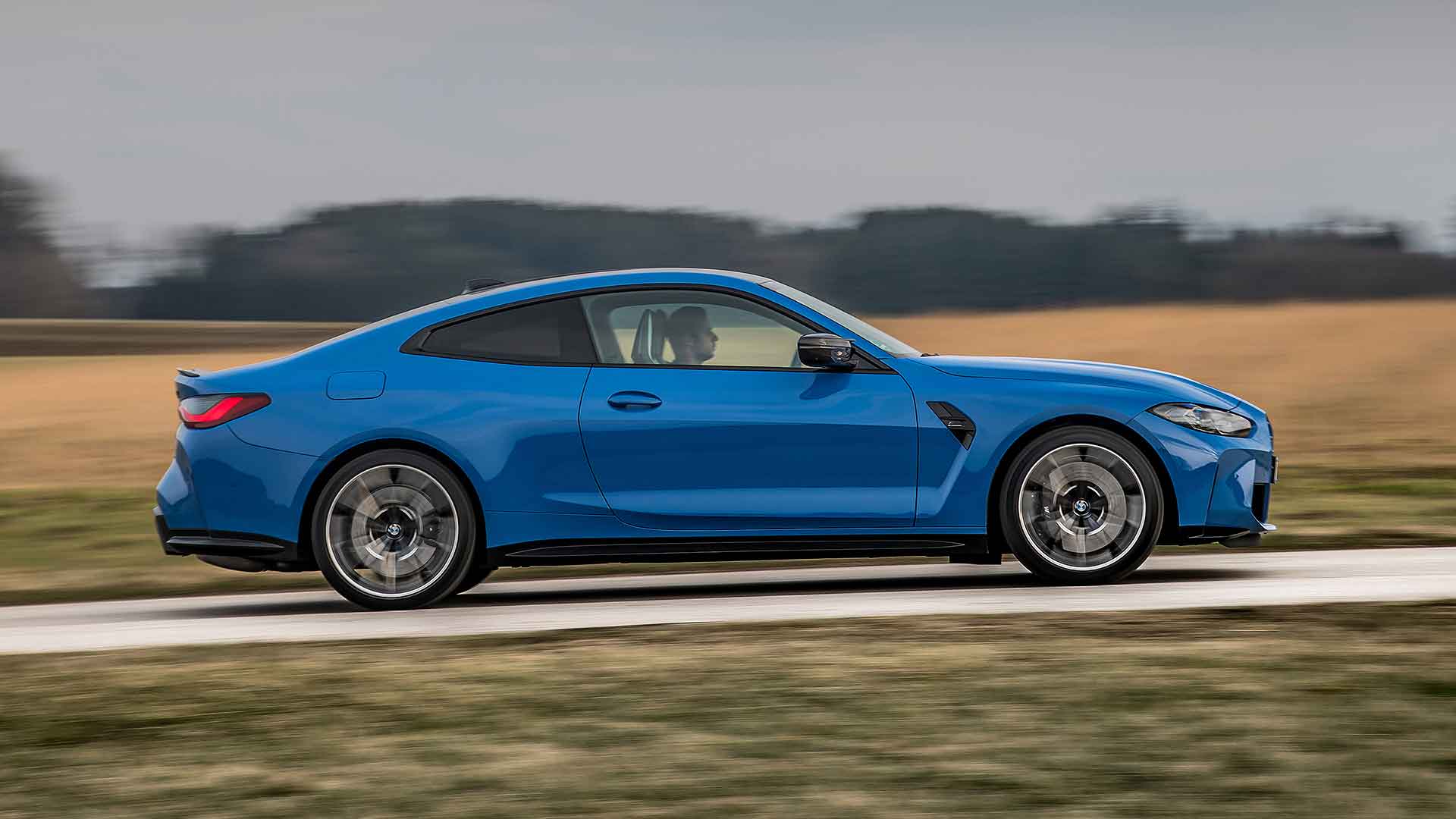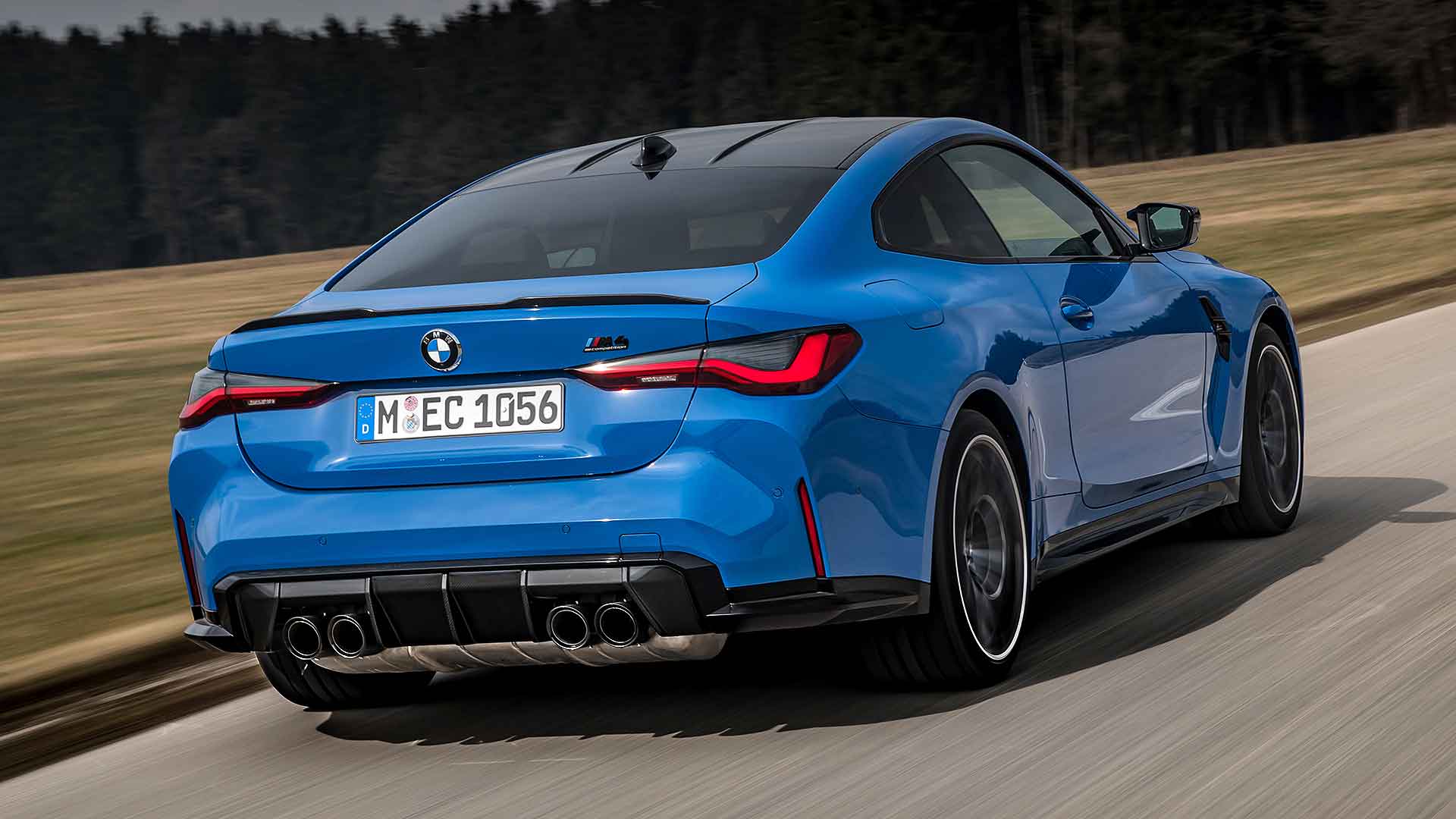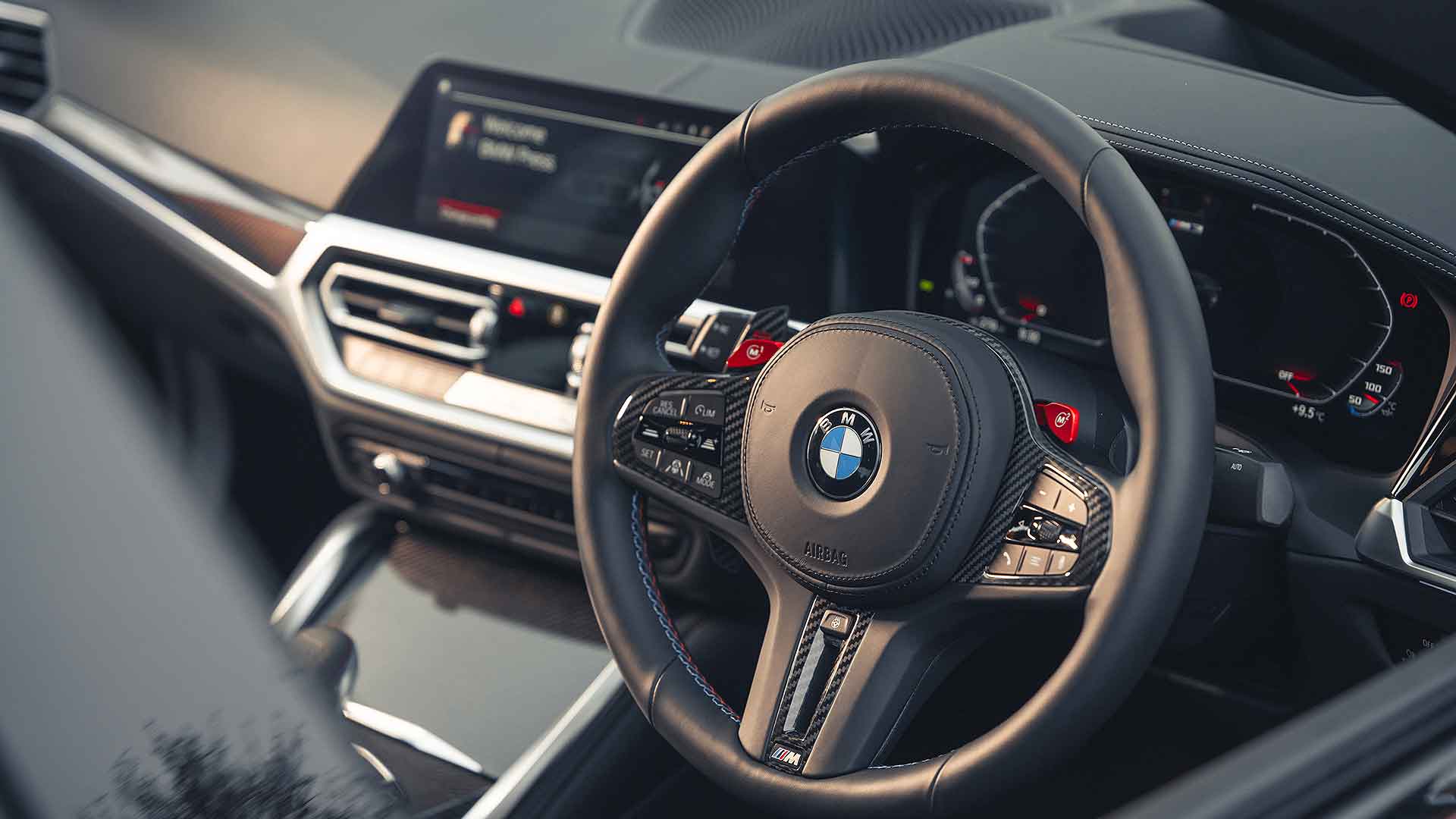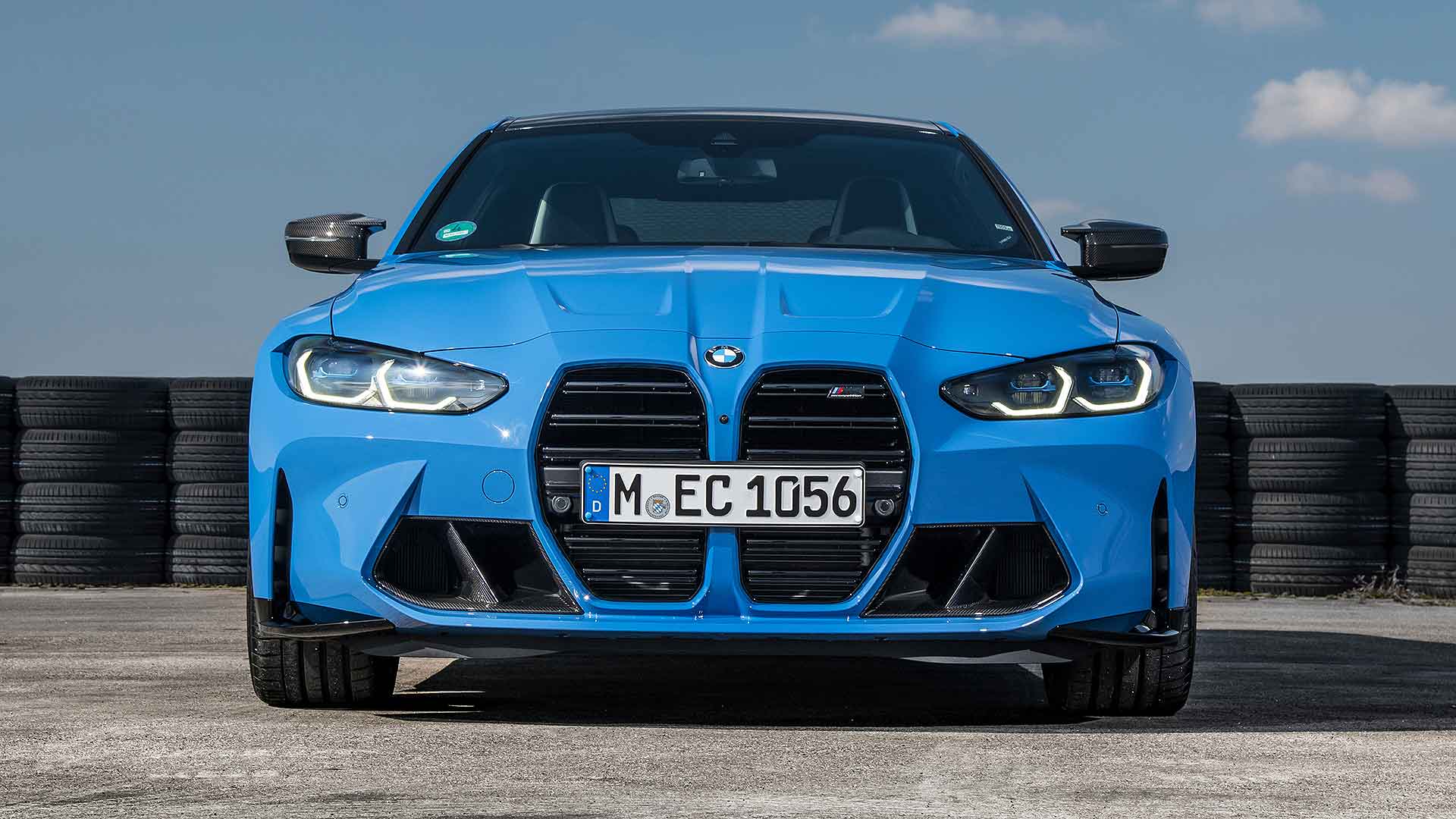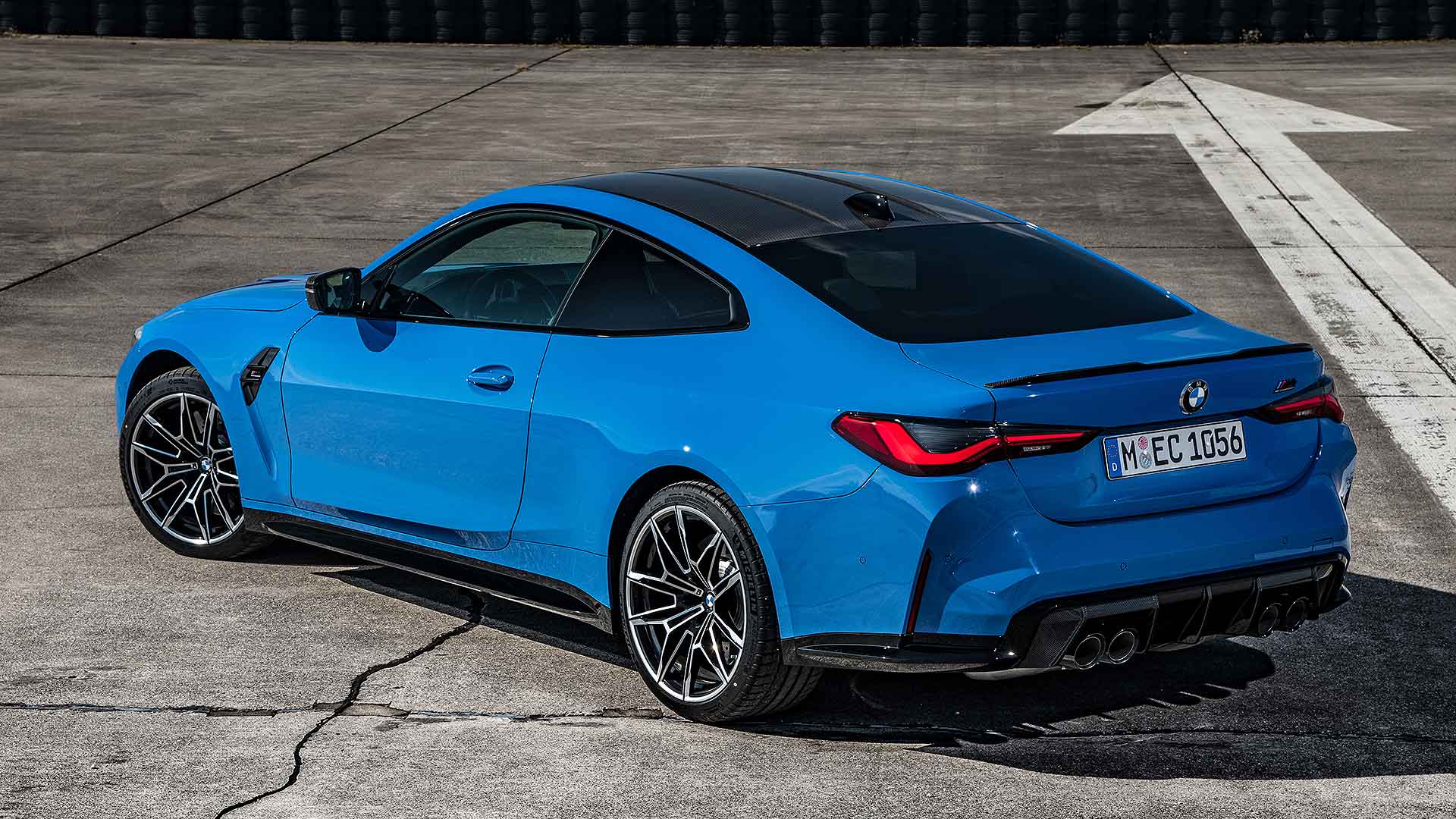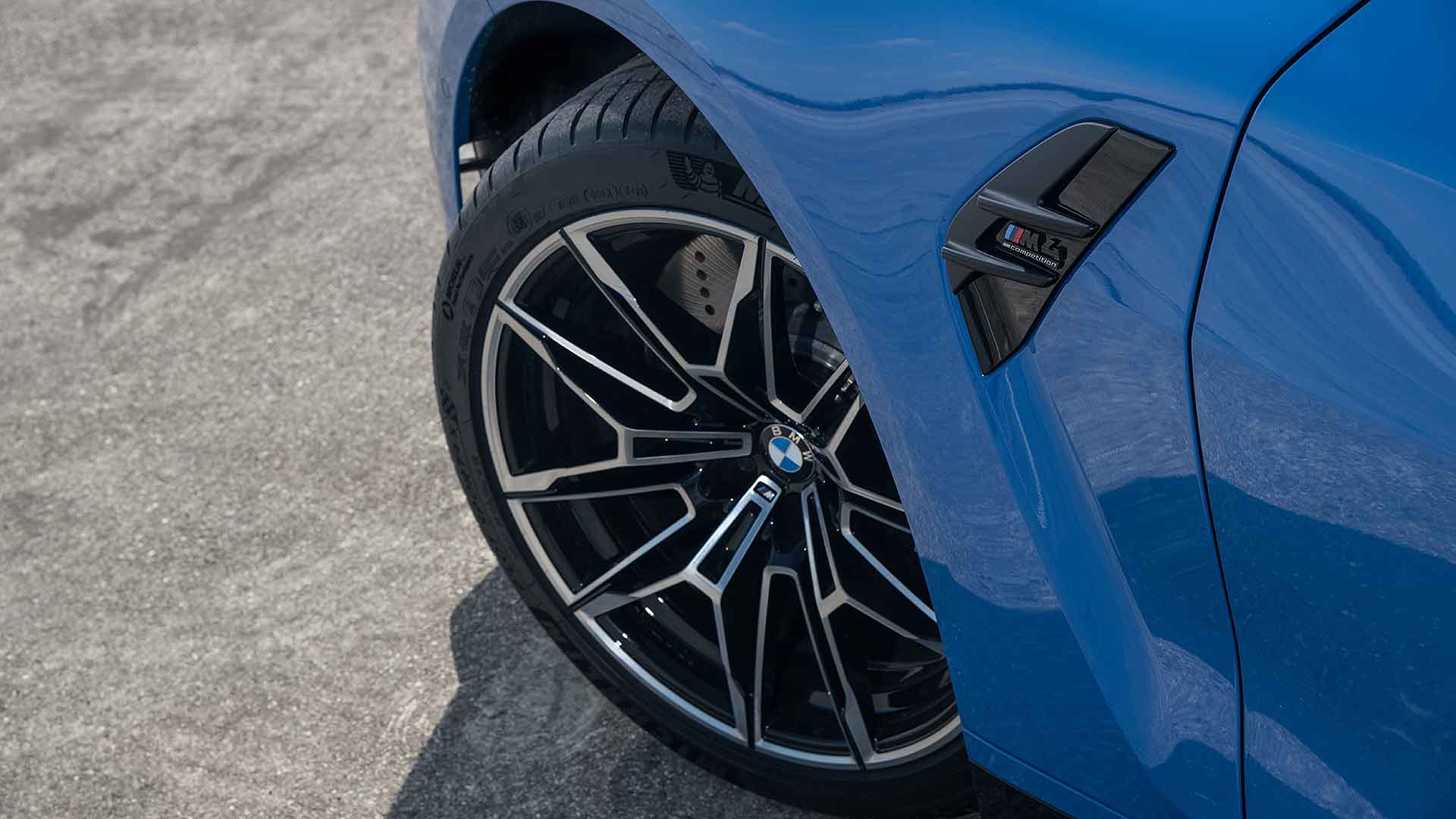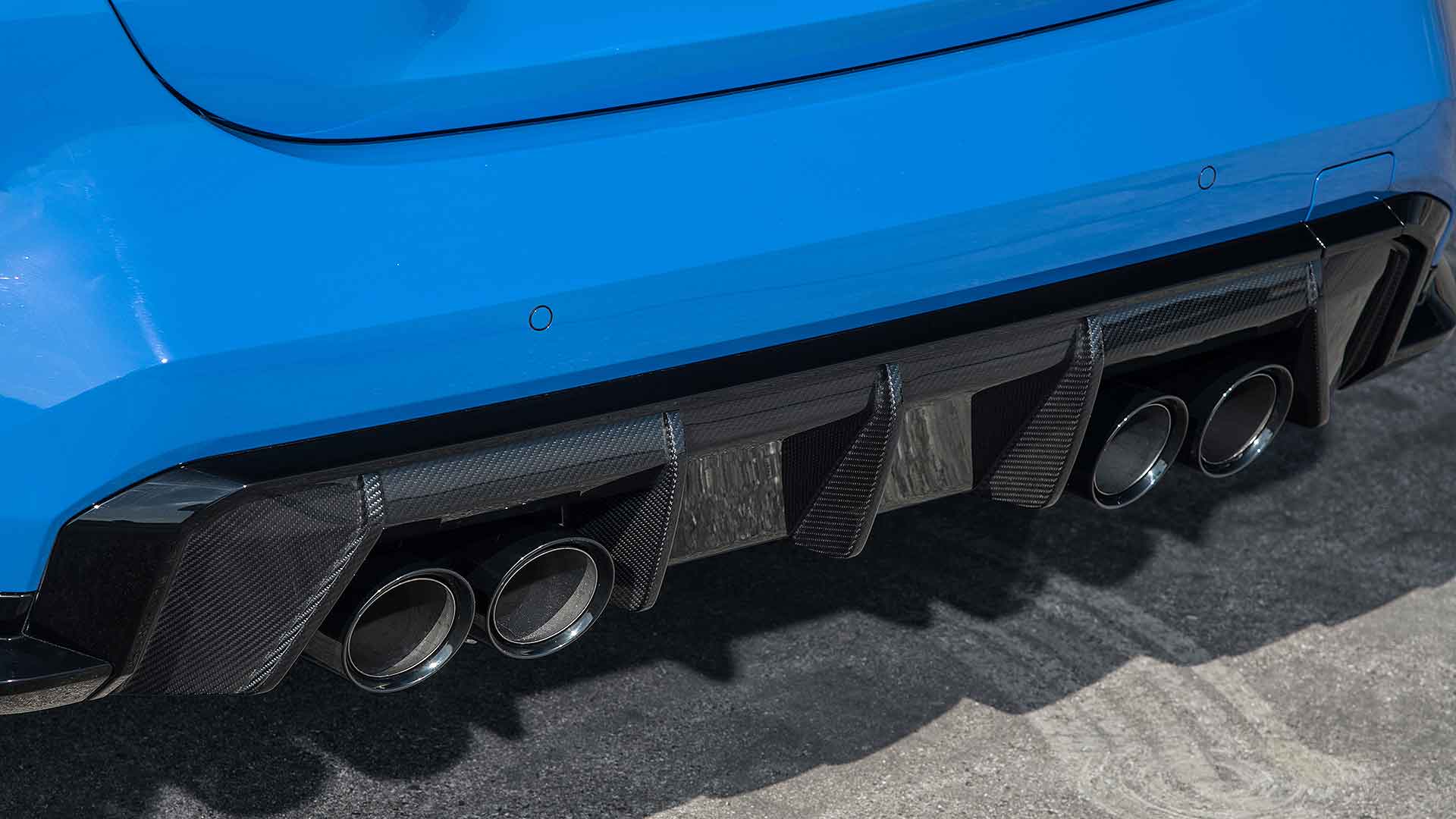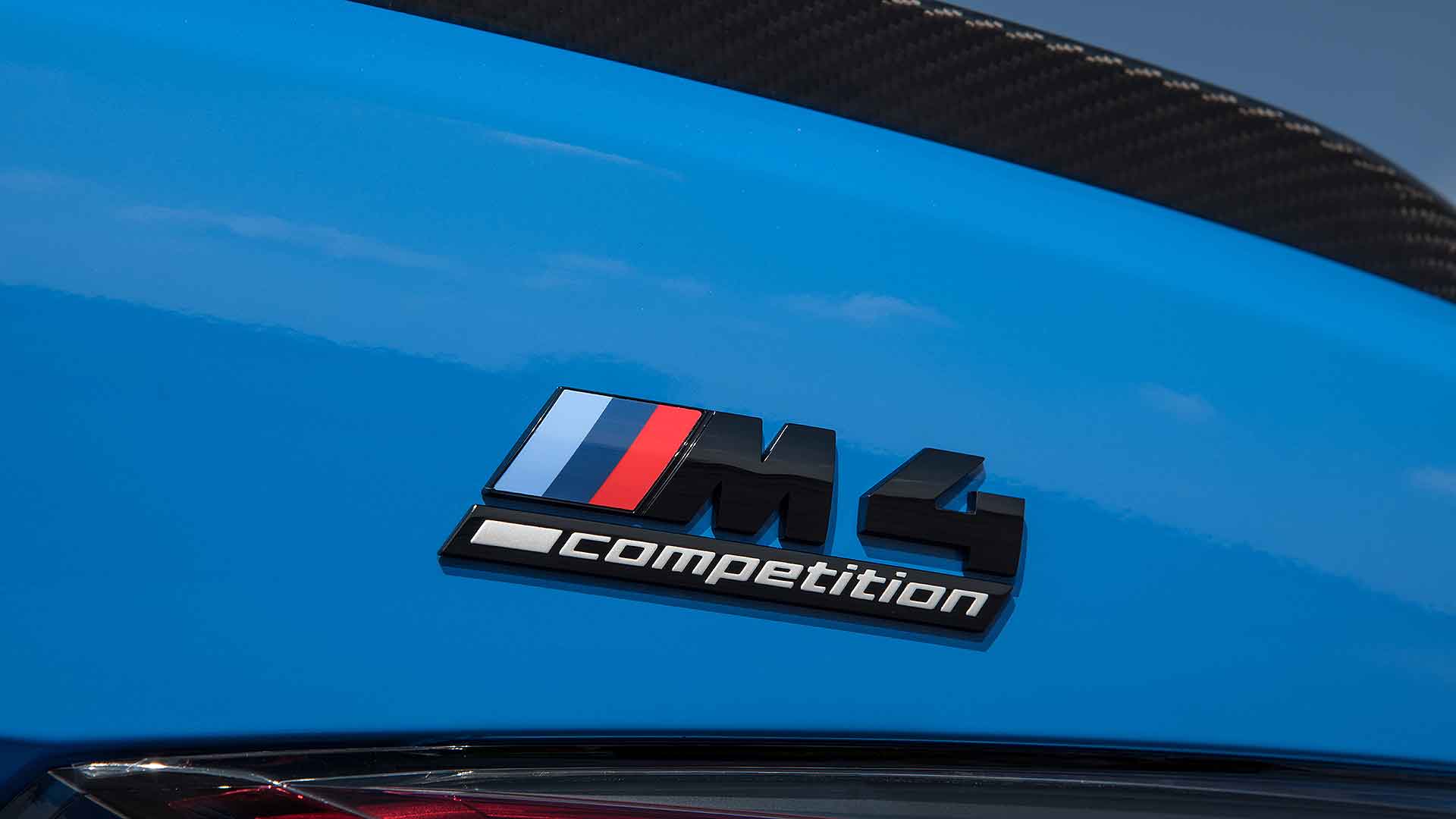Perceived wisdom is that 250hp is the realistic limit for how much power you can send through a car’s two front wheels.
So, where does that leave the cap for rear-wheel-drive motors? If our experience of the BMW M3 Competition is anything to go by, probably something like 510hp.
Helpfully, just in time for traction-ruining winter weather, BMW has given its sporty M3 and M4 an all-wheel-drive option called M xDrive.
Nearly six figures
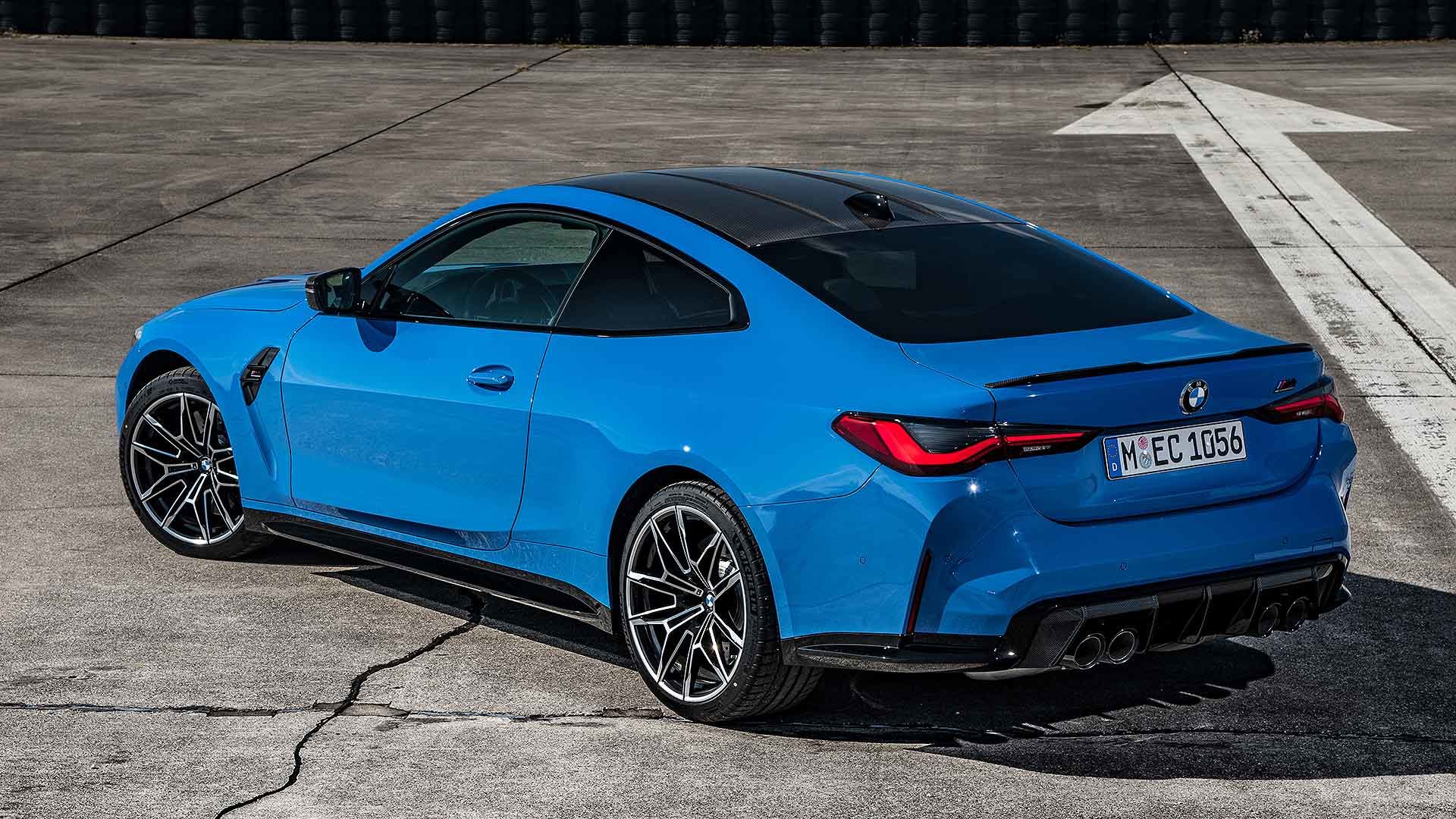
The BMW M4 Competition M xDrive coupe I drove looks no different to the tyre-smoking rear-driver. Some snout-haters would say that’s a bad thing, but BMW’s humongous new conk is kind of growing on me.
I thought my test car looked fantastic – and so it should with options including M Carbon exterior bits that lifted the price from just under £80,000 to nearly £100,000.
The tactile interior remains a lovely place to be, and as BMW tells me a new infotainment system is coming soon, I didn’t bother wrangling with this one. Instead, I marvelled at the OTT-looking but magnificently comfortable M carbon bucket seats (part of the £11,250 Ultimate Pack), turned on the fruity exhaust button and set off.
Four to the floor
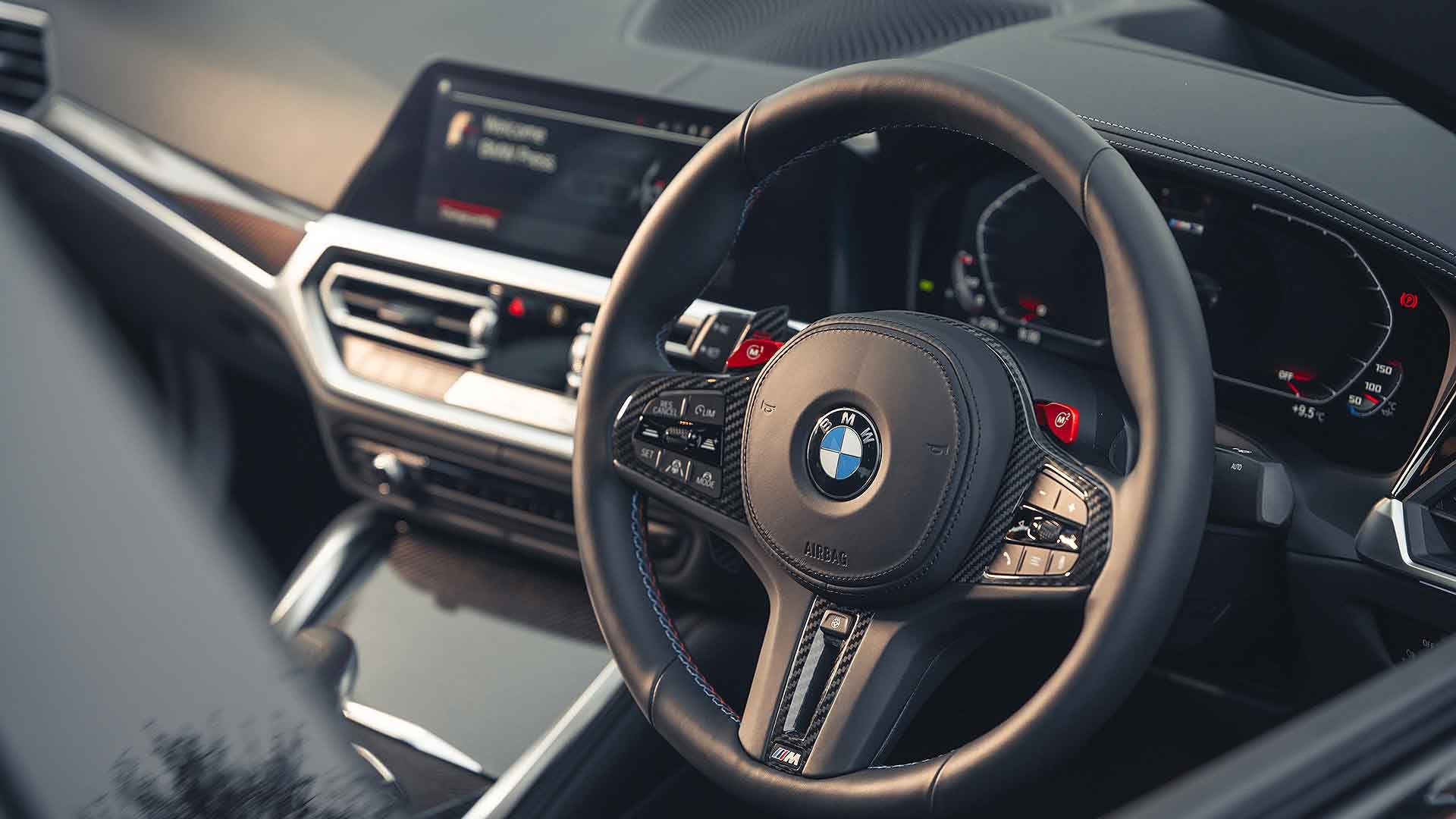
This 3.0-litre straight-six twin-turbo engine is terrific. It feels and sounds authentic and mechanical, despite being turbocharged, with creamy pulling power and no lag. It’s a classic BMW engine – and monstrously fast, with 0-62mph taking just 3.5 seconds. That’s almost half a second faster than the rear-driven car. Wave goodbye to the purists in your rear-view mirror.
Mind you, even they probably won’t be able to tell this all-wheel-drive M4 from the regular car. Thanks to BMW’s impossibly complicated xDrive tech, it runs in rear-wheel-drive mode most of the time anyway. The front tyres are bought in, progressively and instantly, when the car detects a loss of traction. You’d never know.
On a racetrack, this can make you a hero. Even when the front wheels kick in, BMW will let you bias the drive rearwards – or, if you’re a true drift king, simply turn the front wheels off entirely. There’s even an onboard drive recorder that tells you the length and angle of every drift…
A controlled explosion
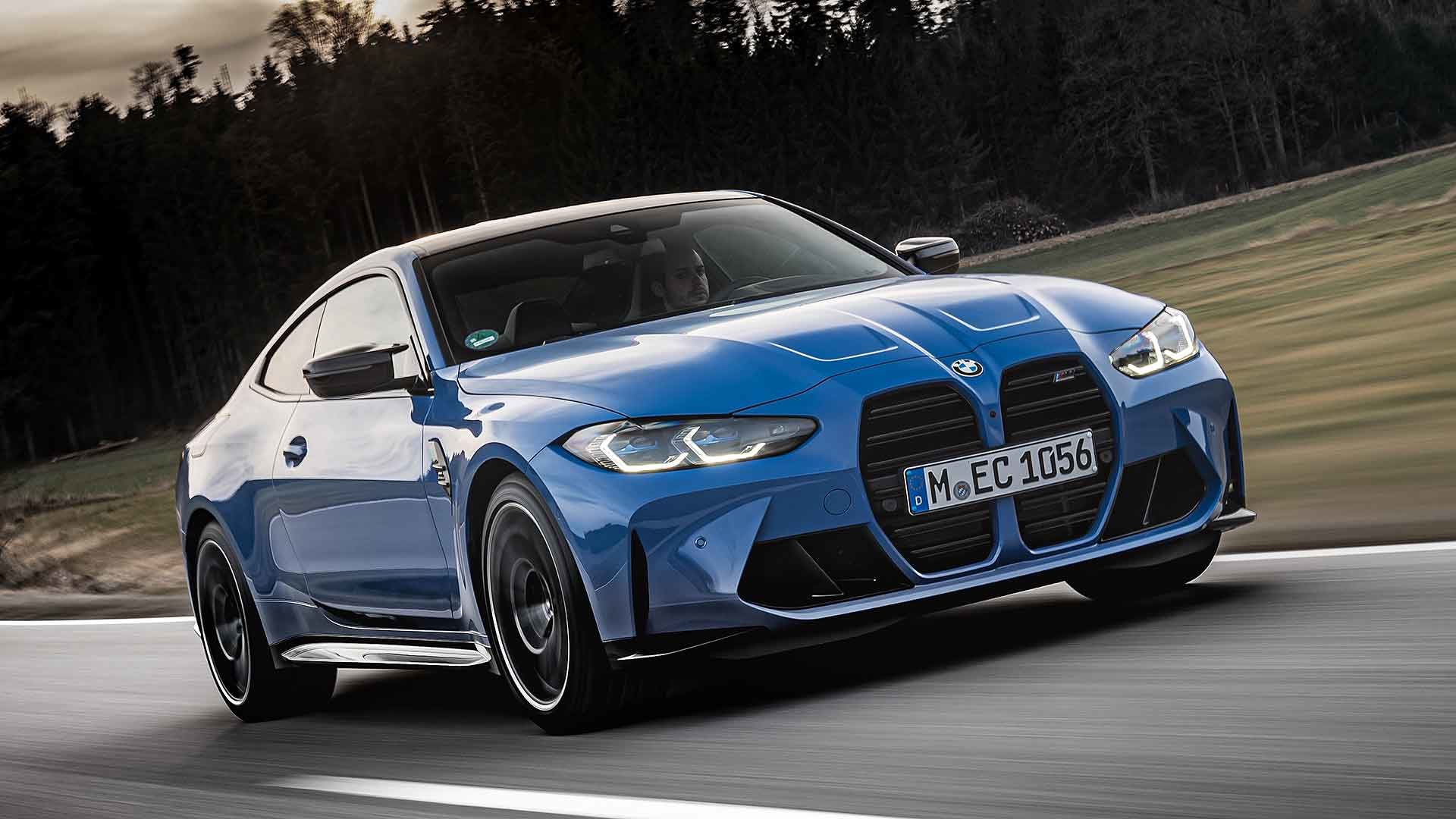
On the road, it simply means more of that 510hp is usable, more of the time. You don’t fear autumnal roads because it always feels so planted and stable. Out of junctions, it simply explodes, with just a slight squirm of the steering wheel to betray the clever drive-juggling going on underneath.
It beats me why you’d ever want the standard car after driving this (well, unless saving £2,765 was all – but this is a car with a £4,000 Frozen Brilliant White paint option; customers are unlikely to be cost-constrained).
Naturally, being a modern M car, there are a multitude of driving modes. I kept it simple: in regular mode, it’s surprisingly compliant, with fairly supple active suspension and a reminder of the huge wheels and liquorice tyres only at slower suburban speeds. I feared it would be rock-hard and raucous, but it felt like a liveable daily driver.
Kitchen sink included
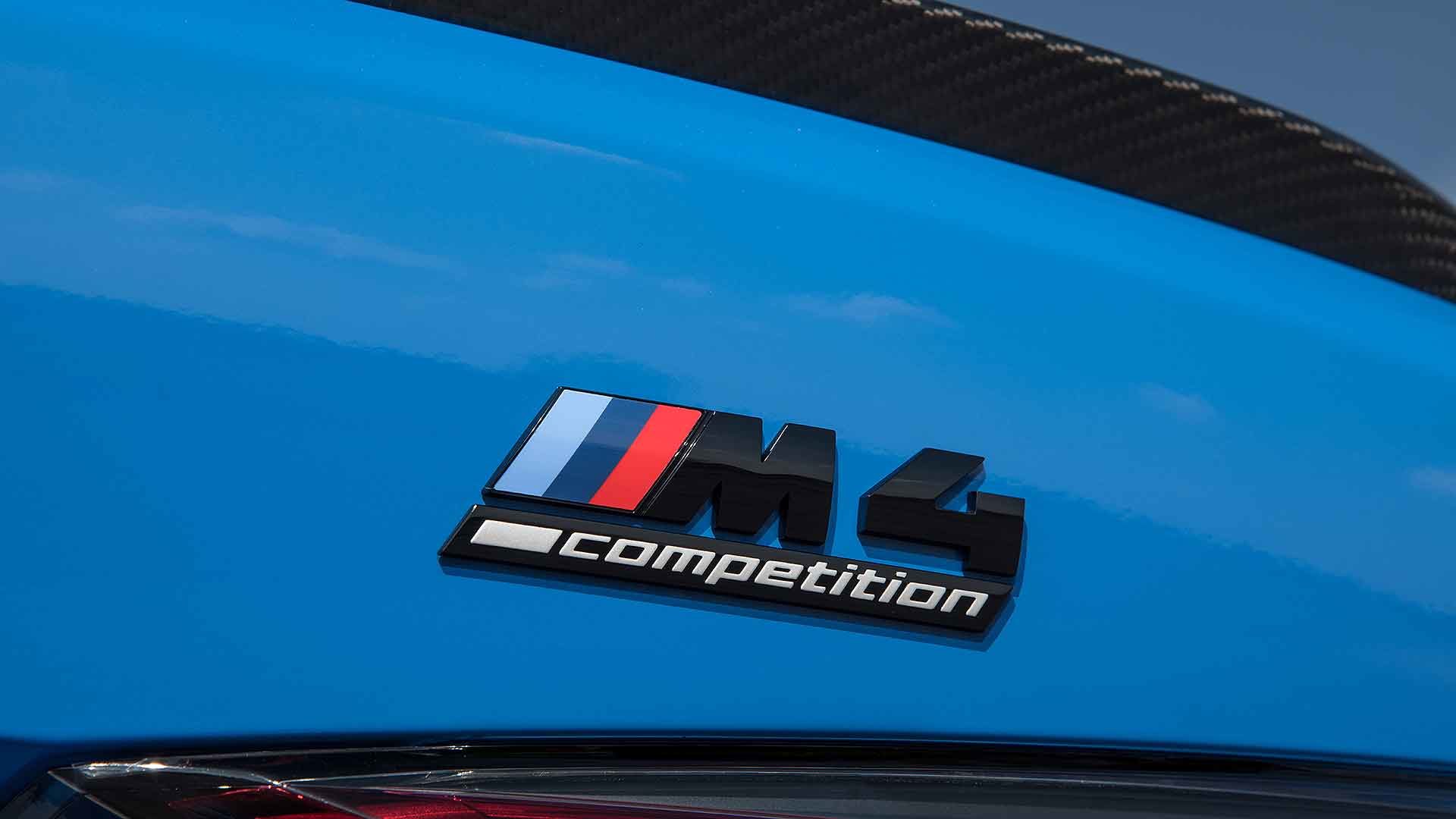
There are two red ‘M’ buttons on the steering wheel, both fully configurable. In my car, M1 tautened the suspension, crisped up the engine and held onto gears longer. It was nice. M2 was full-on savage mode, hard and unyielding, with an accelerator so sharp, it kangarooed constantly (and the exhaust boom-buzzed the carbon interior trim). It was horrible.
Perhaps this mode is perfect on track. After all, BMW has thrown the kitchen sink at circuit drivers with this car, which I guess adds to its authenticity. But it’s on the road where it most surprises, through being such a fast, finessed, pure and potent super-coupe.
There’s a lot to be said for perceived wisdom; it’s made this easily the most well-rounded M4. And all for a premium of less than £3,000? You’d be foolish not to.
ALSO READ:
BMW M3 Competition 2021 review
Rivals: Porsche 911, Audi A5, Mercedes-Benz C-Class
